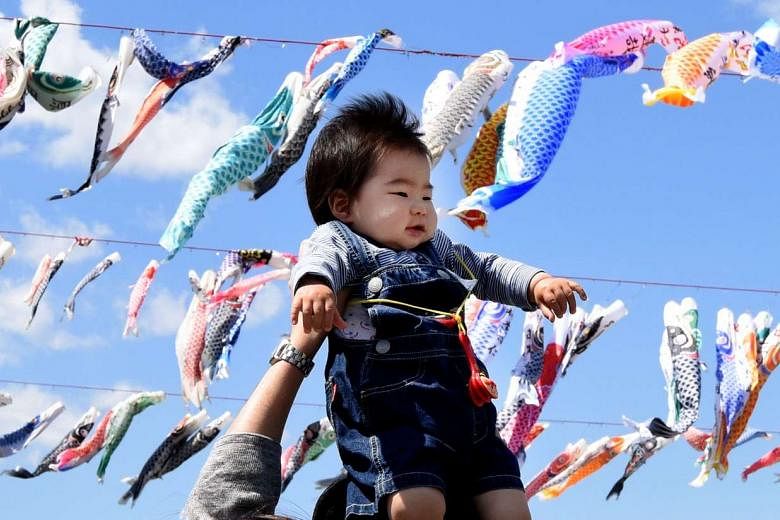Last year, the nation's fertility rate increased year-on-year for the first time in two years, rising to a level close to one posted 21 years ago.
This is good news. We hope the fertility rate will be further improved by expediting the implementation of measures to combat the low number of births.
The Health, Labor and Welfare Ministry has released its population survey report for 2015.
There were 1,005,656 babies born last year, up 2,117 from the previous year for the first year-on-year increase in five years.
The total fertility rate, or the estimated number of children a woman will give birth to over her lifetime, was 1.46, up 0.04 point from the previous year, when the rate posted the first year-on-year drop in nine years.
The fertility rate, which fell to as low as 1.26 in 2005, has been on an upward trend.
The improved employment situation, which has resulted from an economic recovery, is considered to be a primary factor in the latest pickup in the fertility rate.
Amid a growing sense of alarm over the declining population, reinforced efforts by local governments to cope with the low fertility rate may also have proved effective.
Yet we cannot be optimistic.
Although there has been an increase in births, the number of newborns last year was still the second-lowest ever, coming on the heels of the record low posted in 2014.
The country's natural population decrease, calculated by subtracting the number of births from the number of deaths, registered a record 284,772.
The fertility rate also remains far from the 1.8 target set for now by the government.
As the trend of the low fertility rate has continued for some time, the population of women of childbearing age is expected to decline rapidly in the years to come.
Even with a slight rise in the fertility rate, the number of newborns will not necessarily rise.
The total population has been declining since peaking in 2008. The government has set a national target of maintaining a "population level of 100 million 50 years from now."
To achieve this target, it is necessary for the fertility rate to increase to 2.07 by 2040. This will not be easy to realise.
A major factor behind the low fertility rate is the tendency to marry or have children later in life.
The average age for the first marriage for women was 29.4 in 2015, and the average age for having the first child was 30.7, both up about three years from 20 years earlier.
There has also been a marked rise in the ratio of men and women remaining single.
Many people among younger generations hesitate to marry or have children for economic reasons.
It is important to stabilise employment for young people.
Measures to improve non-regular workers' working conditions and raise their status to that of regular workers should be promoted further.
It is also important to hold in check the population concentration in the greater Tokyo area.
Due to such factors as high housing rents and a shortage of child care centers, the fertility rate in the greater Tokyo area is extremely low.
To attract young people to settle in non-metropolitan areas, it is necessary to create jobs there.
It is also vital to improve the environment for people to continue working while raising children.
Another challenge in addition to an improvement in child care services is changing work practices, such as rectifying the practice of long working hours.
With the number of working couples rising, there can be little hope of seeing the fertility rate go up as long as child-rearing and household chores are left only to women.
The roles that companies should assume in this regard are great.
The government's draft plan to create "a society in which all citizens are dynamically engaged" lists these measures.
They must be put into concrete shape expeditiously so people in younger generations can have hope of getting married and raising children.
----------------------------------
The Yomiuri Shimbun is a member of The Straits Times media partner Asia News Network, an alliance of 22 newspapers.

